Navigating High School Homework Loads
In most schools, a key challenge for high school students is an increased amount of homework, often to the near-exclusion of meaningful free time. ACA, as a rigorous 4-day school, shares this challenge within its upper school. So an important question is: How can students learn to manage a high workload without detrimental effects?
In 2007, the National Center for Education Statistics reported that, on average, US high school students spend 6.8 hours per week on homework, or about 82 minutes per night. For a 4-day school like ACA, not accounting for its accelerated academic standards, that equates to about 1 hour and 42 minutes per night. In ACA's Parent Handbook, our homework policy suggests that (as of 2018) 7th-8th grades should target 75 minutes of homework per night, and that 9th-12th graders should target 1.5 - 2.5 hours homework per night, goals that appropriately balance national 5-day averages with ACA's advanced 4-day program.
But not all students have the same abilities, and not all assignments are created equal. This means that struggles with homework loads in upper school are still common. Given that reality, there are a few important ways to approach homework in advanced grades.
Challenging homework prepares students for college-level work, and for the real world. Times of transition are difficult, and upper school begins preparations for adulthood. Students learn to manage decreased levels of rest and free time, as well as increased levels of work and responsibility. This is a challenge, but it is also a gift. Students are trained for independence and self-sufficiency.
Homework should still never be more than is necessary. At ACA, we're keenly aware of the strategic strain our curriculum places on upper school students. Our design is to challenge them, but not to smother them. In assessing our degree of rigor, we look for general, long-term trends in student performance and well-being, and we are committed to limiting assignments to those that are essential for growth.
Upper School students learn flexibility in habits. Ideal workloads never fall into the lap of every student generally. Rather, students must learn to strategize about ways to make their work more efficient. They consider questions such as, How can I make the most of every minute of the day? Are all my materials organized? Do I follow a consistent, inviolable homework routine every day of the year? Am I constantly challenging myself to greater speed and focus? Academic success is in large part a function of productivity, a non-academic metric. Investments into habits and structure pay dividends in terms of accuracy, speed, and retention.
Upper school students balance long-term excellence with short-term growth adjustments. Sometimes, a short-term loss is a long-term win. If students are struggling with big reading loads or with getting math problem sets done, excellence is not always to dig in, go slower, and spend six hours per night working instead of two. Rather, students learn the appropriateness of setting occasional time limits on assignments. They might aim for total accuracy and speed, but they also bind themselves by the clock. This often results in lower short-term scores while efficiency is built, but over time, greater speed, efficiency, and accuracy are developed. Far from de-prioritizing ACA's standard of academic excellence, these strategies help students appropriately evolve their habits to the changing expectations they are given each year.
Excellence, growth, flexibility, and preparation for independence -- these are a few of the wonderful features of ACA's unique upper school program. Our students work hard, but they are met with treasures at every turn (Ps. 16:11), gifts from a loving Father about his world that will prepare them for a life of service for his kingdom.
